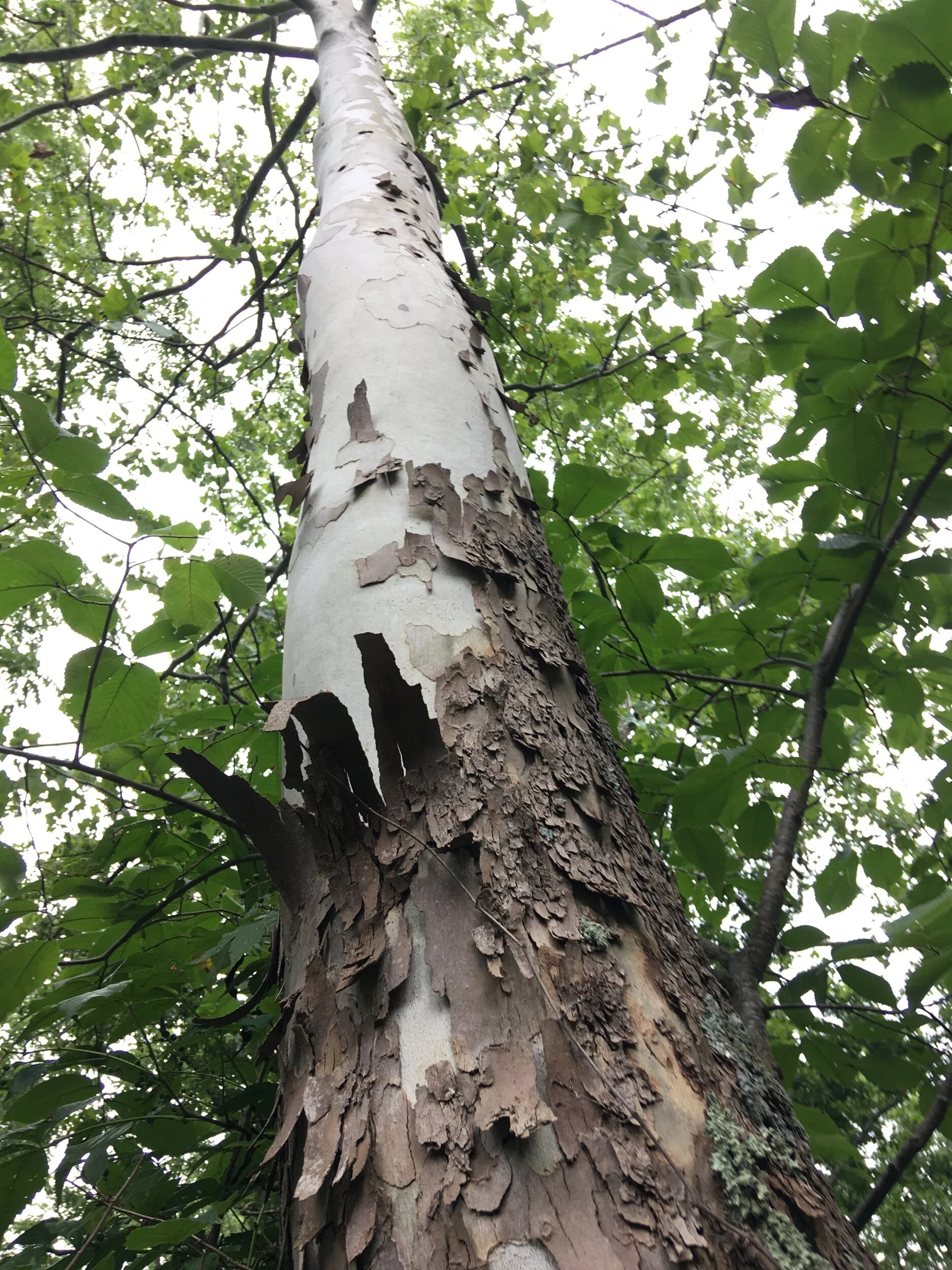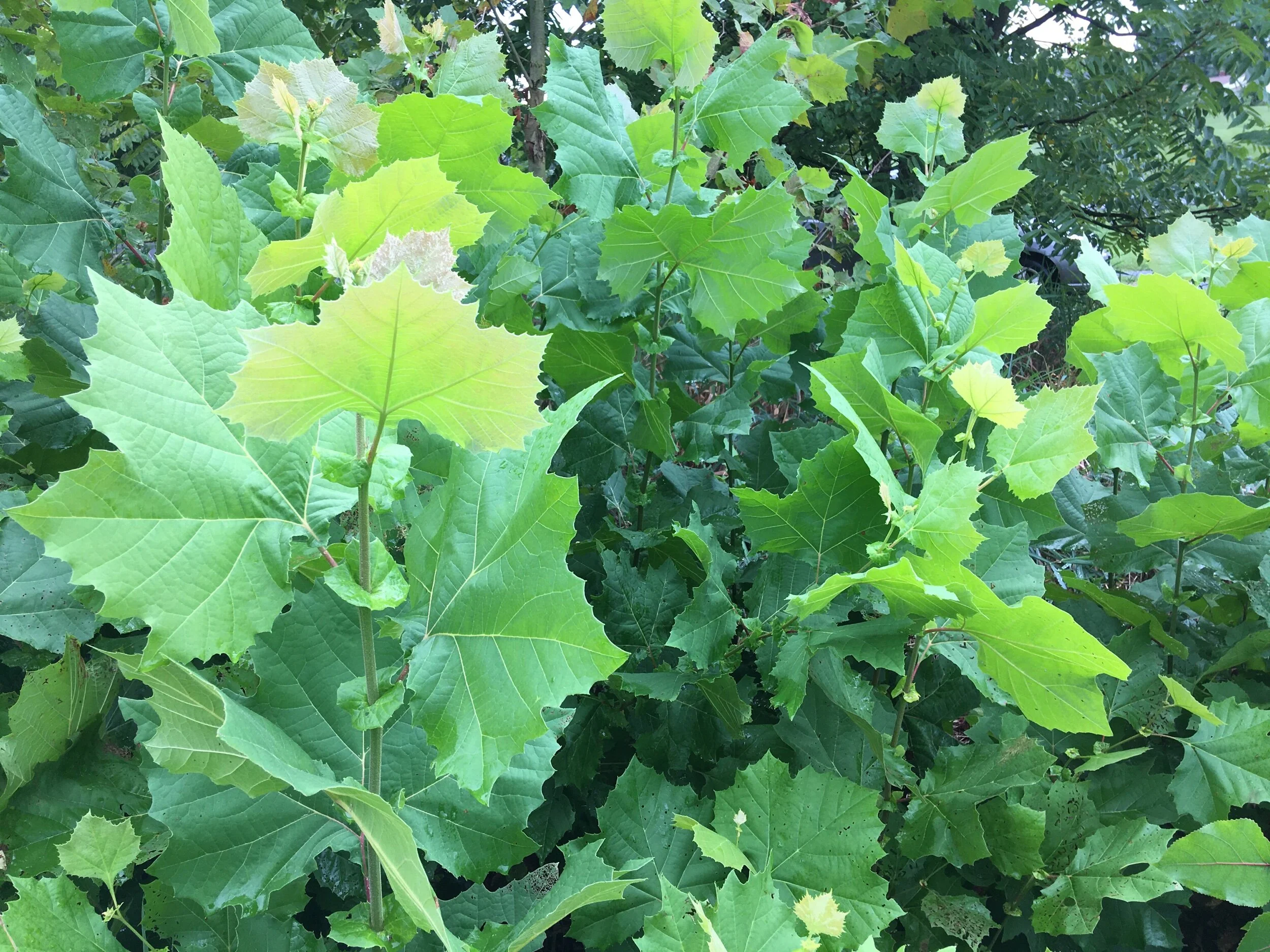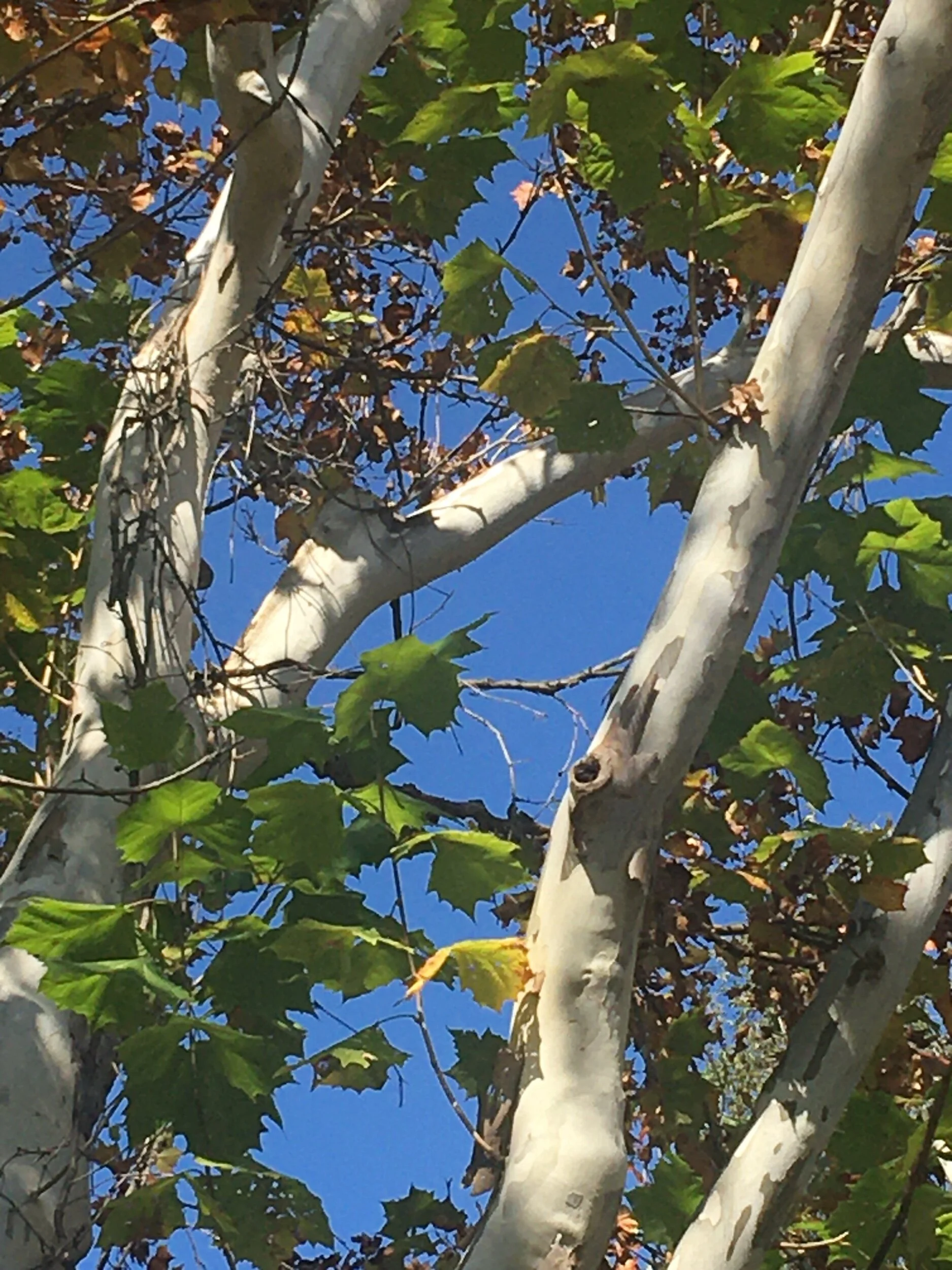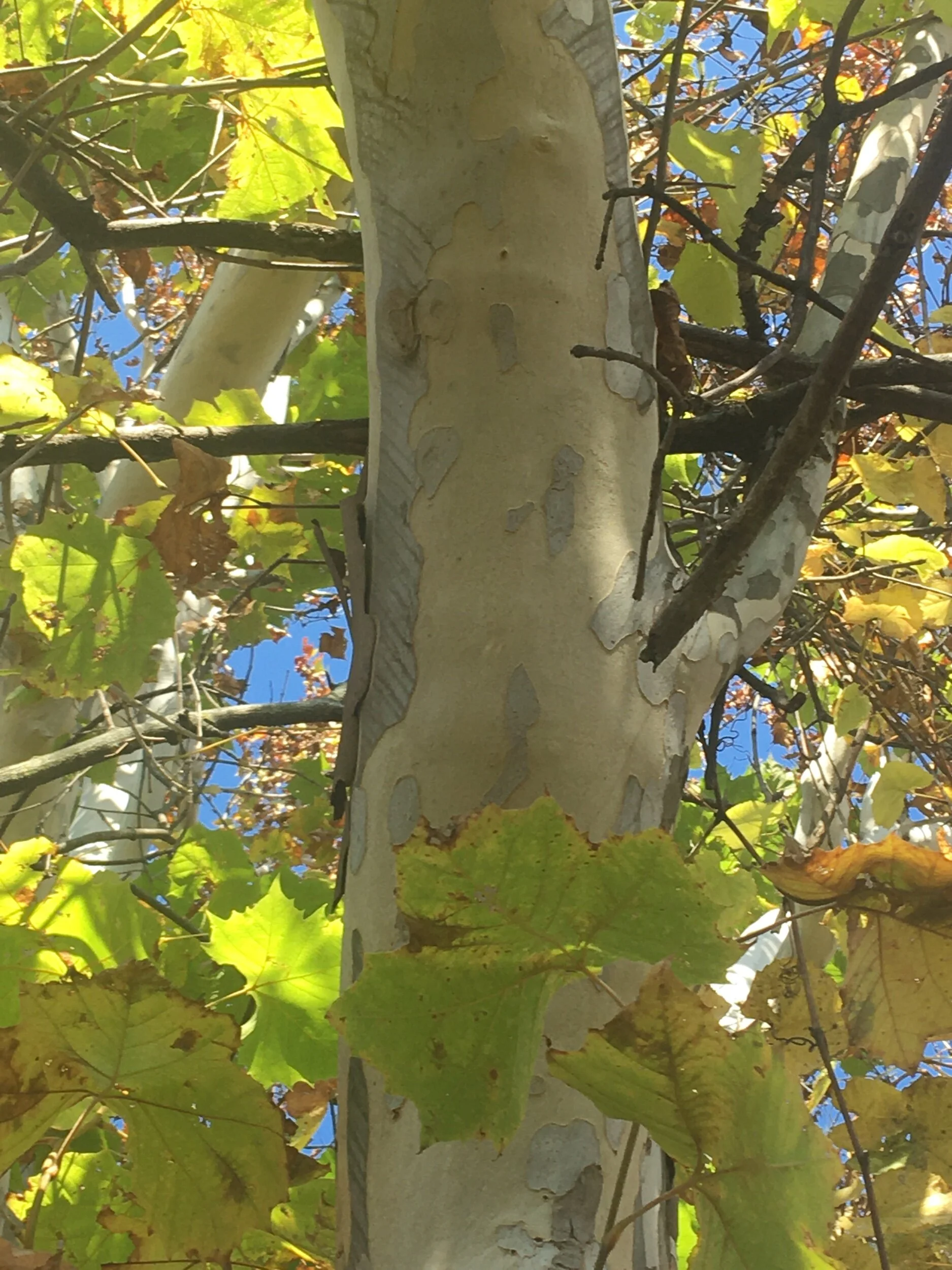Sycamore







Sycamore
Platanus occidentalis
Plant for the beacon-bright bark, for the butterscotch sap, for the resprouting biomass, and for guarding the waterways!
Hardy from Zones 4-9. Up to 150 feet tall (and taller), 75-100 feet wide.
Sycamore sticks out wherever they grow, tracing the lines of water flow. Find the Sycamores and you’ll usually find the water, like a hydrological map. Every now and then we’ll spot a few in an oldfield or on the crest of a hill. But almost always Sycamore stays close to creeks, rivers, and pond edges, even roadside gutters where windblown seed finds enough open debris or gravel deposits to germinate. They watch the waterways like guardians.
Gorgeous and glorious, Sycamore, or Platanus genus, is one of the oldest tree families, small in number but big in size. Only ten species are found worldwide, with three in Native America. Lots of unrelated trees share the name sycamore, which translates from Greek as Fig-Mulberry. We grow Platanus occidentalis, the Native American Sycamore, ranging from the continental divide to the Eastern Woodlands and the coast from Florida to Maine. It’s one of the biggest trees, in terms of height and girth, this side of the Rocky Mountains. They can get up to 150 feet tall and average over six feet in diameter, but old reports measured trees over forty feet in circumference and nearly fifteen feet wide. All that twisting wood grain has provided massive amounts of railroad ties, instruments, veneers, and butcher blocks given that it’s pretty odorless and tasteless itself. They’re sometimes called Buttonwood to indicate another one of their many uses.
Sycamores are monoecious, which means both staminate and pistillate flowers, self-fertile though seed is typically more viable when a few grow close together. Seeds cluster in tight balls called achenes, earning them the nickname Butterball for the color. Sometimes one achene contains nearly a thousand seeds, holding on throughout winter until strong winds loosen them into fluffy parachutes. Trees produce large seed numbers at around age 25, a good source of winter food for finches and other birds. But that’s not the only part of Sycamore that’s delicious. The sap boils into a butterscotch-flavored syrup. The flow rate is low, and can require a vacuum at commercial scale, but what you get out of it is delightful.
These huge trees fill up riverbanks and lowlands, living up to 500 years. As they age, the heartwood rots into cave-like hollows. Flocks of birds – from owls to woodpeckers to herons – make nests in the holes, and big ones become Black Bear dens. Those same cavities have served as curing houses for meats and stables for animals. There are old stories of settlers overwintering themselves, as well as self-liberators from slavery hiding in the hollowed trunks along the Underground Railroad.
Sycamore bark is its most distinctive feature and has been used medicinally by numerous Eastern Woodland tribes for cough, dysentery, as a urinary aid, and dietary aid to gain weight. Sycamores shed their grayish outer bark over time, stretching as all trees do when the trunk grows. But Sycamores have a particularly rigid bark, so plates peel off to reveal a creamy white. No one’s for sure why this happens: could be sloughing off bark to transpire more effectively in waterlogged areas, could be pest protection, could be a growing season extension strategy by photosynthesizing along the trunk and not just the leaves. Whatever the reason, the white bark is why Sycamore sticks out on the waterways. White bark bright as a nightlight under the moon, once a natural beacon and makeshift station for self-liberators on the Underground Railroad.
The white bark is one reason why Sycamores have the nickname the Ghost Tree. But that’s also due to the impact of an anthracnose fungi that causes twig dieback, resulting in branches called witches’ brooms that break off easily. The London Planetree, supposedly a hybrid of Platanus occidentalis and orientalis, is more resistant to the fungus, so it’s generally preferred for ornamental landscaping. They’re commonly and beautifully pollarded along street and city centers.
Sycamore grows swiftly. We’ve seen them top seven feet from seed, and we’ve read about seedlings that get even taller. Leaves look a lot like Maple but get significantly bigger. Fast growth and massive leaves get us thinking about coppice and resprouts! In the 70s and 80s, thousands of Southeast acres got planted with Sycamore for short rotation silviculture to produce biofuel. Growth tapers off after three years, so cuts happen on a three-year coppice cycle. A North Carolina State extension study reported the second coppice cut producing over 16 dry tons per acre on eroded agricultural land without irrigation or fertilizer while improving soil health. We’re not excited about converting agricultural land for food into biofuels, but this research suggests we could partner with Sycamore as a temperate imitation of tropical agroforestry. We’re starting to interplant their deep roots and massive leaves into horticulture and agriculture for coppiced mulch and nutrition.
We grow our Sycamores from seed and from dormant hardwood cuttings. If the trees are too tall for easy shipping, we’ll snip a little heading cut just above a bud.